Introduction
Research Background
Since time in sundry, the art of movement and gesture were the main tools of communication among human beings (Assalahi, 2013). Basically, as a visual language, art has expressive and receptive components through which different ideas may be communicated void of any audible speech (Amin, Benachaiba, & Guemide, 2013). This means that art is an integral teaching tool, especially in teaching learners with disabilities in verbal communication. As a structure of language and technique of expression, art can be used to catalyze proactive sensitivity on the side of learners in terms of feelings and communication of own ideas (Birks & Mills, 2012).
Specifically, the relevance of art in English language learning for deaf students functions on its ability to give such learners the means of focusing on what is visible to the eye as opposed to what the ear can hear. Art activities compliment the interactive relationship among deaf learners in a classroom setting since it gives the learners an opportunity to visualize and share their experiences (Faruk, 2014). For instance, handicapped learners with special art talents who are recognized among their peers are likely to develop enhanced social, emotional, and cognitive skills (Ching & Fook, 2013).
In the elementary classroom setting, the drawings by young learners create a cognitive corridor towards nurturing their own understanding. It also allows the instructor to review the level of a learner’s understanding of correct syntax and new vocabulary (Cullen, Harris, & Hill, 2012). Since art is both a verbal and visual language, its application is dynamic and learner-oriented. The verbal component of art as a language consists of expressive and receptive elements. According to Faruk (2014), the receptive language involves comprehension of words that others use through encoding and decoding of any verbal symbol. On the other hand, expressive language is the proactive communication of ideas through writing or speaking of the coded symbols.
In application of visual language, Gass and Mackey (2012) elucidate that learners should be in a position to read and accurately interpret any visual symbol that is encoded in a form of art. This indicates that verbal language forms constitute words, sounds, and the arrangement of each set of words (Cullen et al., 2012). In comparison, the component of the visual language should consist of the principles and elements of an artwork. On the basis of visual and verbal art languages, the context of English language should be tuned to embed the symbols that are used to arrange the creative meaning and conscious intention (Hii & Fong, 2013). According to Hajhashemi, Aref, and Anderson (2012), visual language is more efficient and holistic than spoken language as a form of knowledge disseminator in communication. Since children can actually understand some words before they are in a position to say them, it is easy to use visual language to teach young learners because of their ability to identify and recognize visual images (Amin et al., 2013).
Based on the synopsis of proactive learning, art is a system consisting of symbols and language that is used for encoding and decoding information. For instance, the visual expression of young learners is a significant factor in their ability to develop repertoire of visual symbols (Hajhashemi et al., 2012). Therefore, they should be instructed through the use of visual language since they are unable to correctly perceive and make meaning of any sounds (Faruk, 2014). This speech auditory challenge should not be an impediment to proactive learning process since such learners rely on what is visible (Mulnix, 2012). The background study has indicated that a deaf student is a visual learner who should be given quality education based on using appropriate visual forms of art. The proposed handbook will integrate the Artful Thinking approach to integrate visual aid as part of the effective English learning strategy. This will be achieved through the creation of a standardized model for visual language aid in teaching deaf learners.
Research Problem Statement
In the public schooling system in Saudi Arabia, English language is taught just like any other subject and not as a communication tool (Alharbi, 2015). At present, the use of Arabic and Grammar-Translation in teaching English is common in most public schools. The content of many textbooks and curricula are angled on deductive activities and unrelated topics (Assalahi, 2013). The use of archaically traditional teaching strategies has resulted in neglecting critical thinking and communication skills in the classroom environment. The situation has not been different in special needs schools across Saudi Arabia. According to Alharbi (2015), there is an urgent need for a paradigm shift in training of the educators in order to equip them with the necessary skills for creative and relevant instruction delivery approaches in special needs learning environment.
For instance, Alharbi (2015) suggests that teachers of deaf learners should have increased access to different modern technological tools for visual teaching to improve the critical thinking skills of such learners. Assalahi (2013) recommends curricula modification through technological integration and use of other visual aids such as pictures and other visual images to holistically fit within the contemporary study life for deaf Saudi Arabian learners. Therefore, there is need to carry out research on the most appropriate instruction delivery methods in teaching English language in a special needs class consisting of learners with impaired hearing problems.
Purpose of the Project
Although there are several past case studies on the merits of illustration and other visual support format in learning and teaching English language in a special needs class, there is very little literature on how the visual aids or art forms are effective in supporting the learning process for learners with hearing challenges. Specifically, this project is constructed to effectively integrate technological tools in the traditional special needs classes in Saudi Arabia. The project hopes to present a conventional and standardized handbook for effective teaching of English language through integration of the Artful Thinking Approach, created by Harvard University’s Project Zero.
Research Theoretical Framework
The proposed project is based on the Artful Thinking approach created by Harvard University’s Project Zero and three conventional instruction delivery approaches, which are the Multiple Intelligence, Discourse, and Communicative Language Teaching (CLT). The Artful Thinking approach educates learners on critical thinking with the aid of simple routines as a guidance tool for developing processes of analyzing and observing art. According to this approach, art is viewed as a significant force in nurturing thinking dispositions and skills that are applicable by learners in the curricula (Khaghaninejad & Hosseini, 2014). There are several thinking strategies in Artful Thinking such as Perceive/Know/Care About and Beginning/Middle/End. Since this approach is dynamic and simple, it is adoptable for all grades of learners with hearing disability.
The Beginning/Middle/End aspect is learner-centered since it encourages direct participation and constant interaction with the educator. The learners are expected to share their thoughts on an image from which different interpretations are categorized to represent the beginning, middle, and end of a lesson (Orlich, Harder, Callahan, Trevisan, & Brown, 2012). Specifically, this approach empowers the deaf learners to use the images to create meaning of a phenomenon. The Perceive/Know/Care About also functions on the principle of student-centered learning by attempting to draw a systematic line of thought on perception and actual knowledge to model a routine. Through individual and group work, this approach promotes proactive learner engagement through the use of extra learning materials such as a handout, images, and other illustrations. According to Orlich et al. (2012), the Artful Thinking approach is ideal in promoting dynamic lesson planning and execution through integration of visual language and visual aids to effectively impart English language skills among learners with hearing disability.
As a theoretical framework for effective teaching, the Communicative Language Teaching approach is very broad but has very specific goals. The CLT focuses on achievement of communicative competence through reviewing all aspects of instruction delivery, such as accuracy in linguistics and grammar, context of functional language, and creating a meaningful context in language pragmatics (Obusu, Adu-Agyem, & Opoku-Asare, 2013). This is necessary in complementing the traditional structure and form of lesson delivery by promoting language productively through shifting the dynamics of a special needs classroom to learner-centered as opposed to the current teacher-centered form (Doman, 2014).
On the other hand, the Discourse Approach functions on the goal of promoting effective learner communication in relation to context of real life. This approach is angled on teaching English language by use of real life and authentic materials to enhance communicative and pragmatic competences beyond linguistic knowledge (Reid & Walker, 2012). At the end, learners are expected to apply their declarative knowledge to apply and gain systematic procedural knowledge in English as a foreign language (Amin et al., 2013). Thus, the proposed handbook will instigate a communicative guidelines and approaches to guide special needs teachers to incorporate pragmatics and discourse in creating and delivering an effective lesson plan targeting deaf learners. The project champions for awareness creation on the side of the special needs learners towards discourse.
The Multiple Intelligences theory (MI) works on the assumption that measuring intelligence is possible with the aid of an IQ test. The MI theory functions on several intelligence categories such as logical, musical, kinesthetic, and linguistic among others (Al-Shammakhi & Al-Humaidi, 2015). Ultimately, the MI theory functions as a tool for stimulation and extraction of different kinds of creativity and innovation among learners (Larsen-Freeman & Anderson, 2013). Through integration of the component of the MI theory in a lesson plan, special needs English teachers in Saudi Arabia are likely to succeed in addressing the learning style and intelligence of each learner to improve on performance and competence.
Research Questions
- How can be current instructional delivery methods be modified to integrate visually-aided learning as part of effective and holistic learning process for deaf students?
- What instructional delivery resources should be integrated in the visually-aided English learning process to make it effective and relevant to the curricula?
Objectives of the Project
From the above research question, the following objectives were generated to address the research topic;
- To establish the most appropriate instructional delivery strategies that English teachers may use to harmonize the noted discrepancies in terms of visually-aided learning.
- To determine the effective instructional delivery resources that special needs English teachers can use to improve on visually-aided learning for deaf students in elementary and intermediate English language levels.
Significance of the Proposed Project
The proposed project will systematically introduce authentic English language to learners through the use of pictures and other visual aids. It will also create a framework for lesson planning and delivery, which ensures that the English language learning is learner-centered as opposed to the current teacher-centered approach. Lastly, the project will be a significant bridge-building tool in teaching complex reading for the deaf learners through the integration of different graphic images that they can easily associate with.
Limitations of the Research
The proposed project is associated with several limitations that can be related to design, approach, and scope. For instance, the proposed project is created for elementary and intermediate level of learning language in Saudi Arabia (Creswell, 2013). The communicative and linguistic competences needed in application of this project require relatively low level of proficiency in English language. Since the project proposes the use of visual language, it may not be of much benefit in classroom environments that do not have access to technological applications. Lastly, in order to effectively implement the proposed project, the educators must have the necessary technological skills. Unfortunately, this might not be possible in all Saudi schools for some English teachers do not have adequate skills in a technologically-aided learning.
Research Conceptual Framework
A deliberate attempt was made to review the instructional delivery strategies in order to bridge any existing gap between the current teaching methods and their effectiveness within elementary and intermediate classes for deaf learners. Figure 1 below shows the dependent and independent variables in the conceptual framework of the study (Yin, 2012).
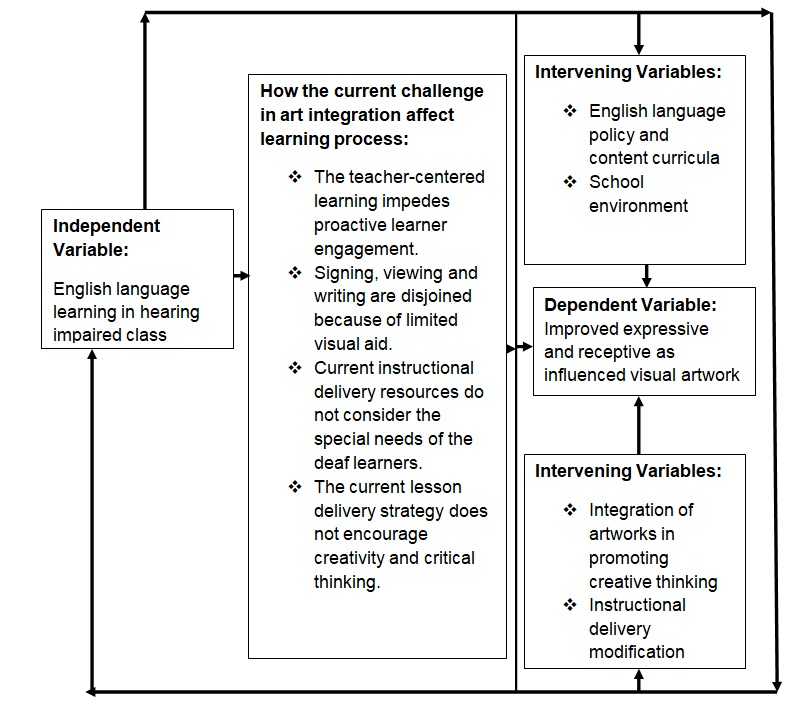
Literature Review
Introduction
When the government of Saudi Arabia approved the English one of the foreign languages to be taught in its school as part of the 1925 official Ministry of Education curricula, there has been steady progress in the integration of English in the public and private schools (Amin et al., 2013). The recent past studies indicate that the attitude of the Saudi Arabians towards English language has been changing for the better because it has become a must-have skill in job search (Faruk, 2014). Despite this progress the Saudi classes remain teacher-centered, and teaching of English language is mostly done via lectures. There are very few instances where a more dynamic and communicative approach is applied, especially in the public schools (Alharbi, 2015; Orlich et al., 2012). This section of the paper reviews the use of photographs of architecture to promote thinking in EFL teaching. The literature review concentrates on EFL instruction to teach deaf students and integration of the project zero’s Artful Thinking strategies to enhance thinking and language learning. Specifically, the strategies under project zero include ‘I used to think… now I think’, ‘colors/shapes/lines’, and ‘connect/extend/challenge’.
Using Photographs of Architecture to Promote Thinking
Incorporating visual language, such as visual aids in the form of photographs of architecture, might facilitate a proactive paradigm shift from the instructor-centered traditional classroom into a proactive communicative learning process that is student-centered. In a research study carried out by Yun (2014), on the use of technology in teaching English language in the public schools in Saudi Arabia, the findings revealed that visual art is effective in enhancing the communication skills and transforms the learners from being passive observers to communicative students. Therefore, visual aids such as photographs of architecture are ideal in enhancing authentic conversations between a teacher and the learners.
Since pictures are a replica of the everyday life, their integration in the English language learning process would improve on the learner experience and Meta memory. In a research done by Ching and Fook (2013), on the significance of visual aids on English language skills acquisition, the findings revealed that use of pictures and other illustrations have the potential of improving the learning experience and general vocabulary attainment. The two researchers concluded that attitude of learners is positive on the use of visual aids such as photographs of architecture in English learning. Moreover, Ching and Fook (2013) established that graphic course materials have the potential of magnifying the critical and creative thinking skills among the learners, especially when implemented in the modeling of a lesson plan and language curricula.
According to Saville-Troike (2012), Communicative Language Teaching (CLT) is one of the most ideal approaches in teaching English language since its introduction in the late 1970s. The intention of CLT is to create an ideal language acquisition strategy characterized by improved communication skills and innovative use of art within a relevant context. Thus, under the CLT, the language learning programs, textbooks, goals, objectives, and curricula are constructed on the desire to improve communicative competence of a learner through integration of art such as photographs of architecture. According to Alharbi (2015), non-proficiency in English learning with Saudi Arabia can be associated with inconsistent instructional deliver methods such as the Grammar-Translation, which does not incorporate visually-aided learning.
Further, more than 69% of English teachers in Saudi Arabia still use Arabic language in instructional delivery (Alharbi, 2015). According to Verderber, Verderber, and Sellnow (2012), the use of Arabic (L1-first language) in teaching English (L2-second language) is counterproductive since it encourages learners to conceptualize their line of thought in L1 and then translate to L2, which may never be accurate or relevant. The use of L1 in teaching and translation to L2 is common with the Grammar-Translation method and may result in lack of innovation, creativity, and communicating competence. Specifically, excessive use of L1 limits the ability of a learner to consistently practice speaking English (Verderber et al., 2012). The inconsistency in the practice of CLT in Saudi Arabia can be associated with inadequate instructor training that is focused on communicative teaching approaches at the expense of effectiveness in instruction delivery through the use of visually-aided learning such as the use of photographs of architecture.
Using Photographs of Architecture to Promote Thinking in EFL Teaching
Art has been used as a universal communication language. For instance, the use of body movements, pictures, gestures, and paintings among others to carry different symbolic connotation is common, especially in circumstances when verbal equivalent is not possible. These art forms are understandable without using any word. Faruk (2014) established the following:
In the Education for All Handicapped Children Act of the year 1975, the use of the arts as a teaching tool for the handicapped has long been recognized as a viable, effective way not only of teaching special skills, but also of reaching youngsters who had otherwise been unteachable. The committee envisions that programs under this bill could well include an arts component and indeed, urges that local educational agencies include the arts in programs for the handicapped under this Act (p. 176).
Reflectively, proactive use of different forms of visual art facilitates memory, especially in deaf learners who heavily rely on visual communication to build on cognition. According to Khaghaninejad and Hosseini (2014), art forms are significant in developing strong cognition, since they offer a series of opportunities for learners to explain their expectations and activities at hand through visualization. In practical application, visualizing an image would facilitate development of strong memory, which is ideal in good academic growth. As noted by Larsen-Freeman and Anderson (2013), visual arts can be used to impart knowledge to deaf learners even in straight courses such as syntax, grammar, and spelling, especially when its usage is integrated in the lesson plan. Irrespective of the school environment, an education system is imbalanced when the holistic aspect of art integration is missing, irrespective of the learner’s competency level (Goldratt & Cox, 2016). This means that different art forms or activities enable learners to internalize and continuously participate at varying levels of ability in studying or adapting to a classroom environment (Assalahi, 2013). Therefore, instructional delivery of English language or any other subject would be effective when visual art is included.
The discourse approach functions on utilizing the English language in use through enhancing pedagogy via reviewing the linguistic and pragmatic competences of the learners. The communication skills of a learner are often internalized at infancy. However, the processing of acquiring a new language such as English involves adjustment of the communication skills that were acquired at an early age. This means that incorporation of the discourse approach in grammar instruction and pedagogy requires integration of vocabulary to define a clear context (Cullen et al., 2012). For instance, using art forms would facilitate proactive integration of different concepts in the classroom environment since it promotes creative thinking. Consequently, English language learners in Saudi Arabia will be in a position to accurately use communication and language skills in a simultaneous manner in a discourse.
Using Photographs to Teach Deaf Students
According to Obusu et al. (2013), art forms in the classroom allow learners with hearing disability to proactively initiate a personal line of thought instead of assuming a more passive role. Since deaf learners fall within the category of special needs students, they have a learning challenge, which makes it difficult for them to effectively develop academic skills. Such deficiencies may be addressed through talent and interest development in the different artistic activities that they are able to successfully complete. In the education of persons with hearing disability, art becomes an integral tool for effective instructional delivery (Obusu et al., 2013). Through the use of different artistic mediums in English learning, it is easy to develop the self-concepts and academic skills of the deaf learners. This is possible since art forms, such as pictures, facilitate proactive learner-centered experiences that can be adopted in all areas of English language curricula (Hii & Fong, 2013). Irrespective of the learning environment, visual art is an important tool for teaching learners innumerable skills that foster emotional, social, and intellectual growth. Specifically, visual art is an aid to activity-based learning to promote complete participation in the classroom.
Different forms of foster imagination in the line of thought of a learner through integration of abstract ideas and concrete materials. Since deaf learners have an immature neural system, it is difficult for them to grip abstractions. Therefore, any abstraction in the learning process should be introduced through pictures, objects, symbols, and their bodies (Obusu et al., 2013). Particularly, forms of art give the learners a head start to improve on the motor, auditory, visual, and tactile elements. Through art forms, learners are empowered to align their line of thought, interpret their knowledge, turn well-developed activities into ideas, and compare past experiences to present processes (Faruk, 2014). Reflectively, deaf learners need visual aids in learning English language since their hearing ability is very limited.
When properly integrated into the lesson plan, art has the potential of offering tangible results with the pleasurable learning experience, especially among the students within the elementary competency level (Obusu et al., 2013). For instance, using different shapes, sizes, and color in symbol or picture recognition makes the content verification easier and more interesting. In a typical classroom environment, art instigates the necessary skills for academic excellence among the deaf learners since they are in a position to self-organize and memorize sequence besides gauging what is visible and what can be done. As a form of instructional delivery method, visually-aided teaching is necessary for deaf learners. However, this method is currently not being properly practiced in the public schools in Saudi Arabia.
Using Project Zero Strategies to Enhance Thinking and Language Learning
Since art forms are visual in nature, their usage in language learning enhances memory. For instance, the Artful Thinking program, developed under project zero by the Harvard University, is a vital tool for instructors on how to integrate works of art in the lesson plan to improve on the learning and thinking of the learners. Created between the year 2004 and 2006, the content of the program is applicable in K-12 classes since its focus is on visualizing and interpretation of art but does not concentrate on how the art is made. The program is angled on the goal of facilitating teachers in creating steady interrelationship between the topic or lesson objectives and works of art. The program also empowers the teachers to utilize the influence of art as an instrument for continuous development of a learner’s line of thoughts for different dispositions. In order to understand the impact of the project zero program, it is necessary to review its strategies, routines, and dispositions. In relation to the research objectives, the strategies that will be discussed are ‘I used to think… now I think’, ‘colors/shapes/lines’, and ‘connect/extend/challenge’.
I used to think… now i think strategy
As part of project zero, the ‘I used to think… now I think’ integrates the thinking dispositions and how they are developed through thinking routines as a concept of art work in language teaching. According to Tishman and Palmer (2007), the thinking dispositions revolve around ability-centric efforts that foreground reasoning, creativity, and thinking skills at the level of a learner. These efforts are based on the assumption that desired behavior can be achieved through incorporation of the requisite skills. The ground zero program uses the dispositional approach in promoting predictable intellectual behavior through multiple art exploration (Amin et al., 2013).
Specifically, this approach is ideal in teaching learners to thinkers who rely on their own line of thoughts since it concentrates on thinking-centers virtues such as proactive commitment, self-sensitivity, and incorporation of a belief system as part of the thinking skills. These dispositional tendencies are strategic in developing cognitive skills for reasoning, thinking, and open-mindedness in a discourse. As noted by Birks and Mills (2012), having dispositional thinking involves recognition ability from a series of observations and motivation to use that capacity appropriately. Therefore, dispositional thinking is angled on separable elements such as ability, inclination, and sensitivity. The Artful Thinking program focuses on six dispositions, which are reasoning, exploring viewpoints, finding complexity, comparing-connecting, questioning-investigating, and observing-describing (Havard Graduate School of Education, 2017).
The ‘I used to think… now I think’ routine can be used to gather perceptions on the significance of art works in language learning between teachers and learners. Basically, this routine requests an individual to reflect on their past thinking about a topic and their current line of thoughts on the same. As captured in the findings of the research, Works of art are good things to think about, by Tishman and Palmer (2007), the findings revealed that learners often report their line of thought and are relatively sensitive when different kinds of thoughts are in play. Moreover, learners and instructors are in a position to make different personal and disciplinary connections when having thoughtful experience about art forms. Specifically, “some of these connections may be intrinsic to the intentions of the artist or context; some may be unique to the viewer and the moment” (Tishman & Palmer, 2007, p. 31).
The authors concluded that different forms of art are gloriously and wildly captivating in their scope and ability to proactively stimulate the senses in the mind in order to make connections to different experiences. It is in order to state that the “I used to think… now I think” indicates the perception of a learner in terms of expansion of his or her line of thought about art. Apparently, the connection between viewing art work and development of thinking skills is that by default or design, visual art encourages subterranean and broadened thoughts. In the real life, artwork motivates an individual to think about how the piece was created and possible ideas beyond each work. In relation to language learning, art allows learners to conceptualize and deeply think about an object in order to form a concept map as captured in the Artful Thinking palette (Tishman & Palmer, 2007). For example, viewing art allows learners to conceptualize a view point, carry out a comparative review, and internalize interpretations. Thus, learners incorporate different forms of thinking as motivated by viewing of artwork because of improved alertness, creativity, and innovative approach to learning.
Colors/shapes/line
As part of the Artful Thinking approach, the colors/shapes/lines routine encourages learners to conceptualize comprehensive observations through proactive engagement of their attention to different artworks or forms. Specifically, this routine focuses on the formal elements of art in order to categorize each element in terms of what is visible (Obusu et al., 2013). The colors/shapes/lines schedule presents three important visual aspects of art, which are the color(s), shape, and visible lines in every piece of artwork. For instance, learners are encouraged to observe an artwork and accurately identify its color, visible lines, and shape in order to create a line of thought (Penda, Bijelic, & Babic, 2017).
The Artful Thinking approach proposes that the colors/shapes/lines routine is applicable to any visual art form in language learning (Tishman & Palmer, 2007). The use is not limited to art objects or images in teaching language. For example, in the Looking: Ten Times routine, “students can use the routine on its own, or prior to having a discussion about an artwork with another routine” (Havard Graduate School of Education, 2017, par. 8). In application, the colors/shapes/lines routine is important in language learning, particularly prior to a writing activity, since it enables learners to internalize expressive language.
Connect/extend/challenge
The connect/extend/challenge routine encourages learners to systematically connect a new line of thought to a prior idea or knowledge on a subject, especially in the dynamic process of language learning or acquisition. Basically, this routine motivates learners to create individual connection to a topic about artwork (Pedersen & Kronborg, 2014). In application, the connect/extend/challenge presents three important points touching on how the art connects to prior knowledge, new line of thought and its extension to directional thinking, and potential challenges or ideas that a learner is thinking about. As indicated in the project zero’s Artful Thinking, this routine is applicable in a situation where learners have conceptualized a new idea or experience (Amin et al., 2013). Particularly, the application of this routine can be expanded to cover the post-viewing analysis of an image or a work of art in order to introduce a new line of thinking. For instance, in a language learning class, the connect/extend/challenge can be applied as part of lesson delivery reflection, extension of a previously concluded topic, or in completion of a study, especially after completion of a different routine (Al-Subaiei, 2017).
Summary of the Literature Review
The literature review explored the value of visual art in promoting creativity and critical thinking in English language learning among deaf learners. The review revealed that integration of the project zero’s Artful Thinking within the routines of ‘I used to think…now I think’, ‘colors/shapes/lines’, and ‘connect/extend/challenge’ motivates learners to memorize and internalize creative thinking from visual observation of artworks. Based on the literature review, very little information is available on the use of art in teaching language in a hearing-impaired class or its significance within the public school in Saudi Arabia. Therefore, the proposed project aims at developing a handbook manual for English teachers in Saudi Arabia to facilitate effective use of architectural pictures as a visual art form to teach deaf students.
The New Project and its Development
Project Description
This field project proposes writing activities/learning tasks (with lesson plans) that teachers can present to their deaf students when learning English language in the Saudi Arabian public schools. The project targets deaf students within the elementary and intermediate English and a foreign language (EFL) competence levels. The proposed activities are designed based on the Harvard University Project Zero’s three Artful Thinking routines called ‘I used to think…now I think’, colors/shapes/lines, and connect/extend/challenge. Each writing activity/learning task (with lesson plan) is created to amalgamate at least two grammar skills. Each lesson is expected to last for 60 minutes. The project aims to create a paradigm shift from teacher-centered to learner-centered Saudi Arabia EFL classroom for deaf students.
The Project Handbook
Inspiration of Saudi Heritage on Improving Teaching and Learning of English to Students with Hearing Impairments:
Proposed Lessons Based on Project Zero of Harvard University.
A Handbook for Teachers
By: (Insert Your Name and Title)
A Brief to the Teachers
Welcome to EFL teaching with the aid of visual pictures. This handbook has nine sample writing activities/learning tasks (with lesson plans) integrating Saudi Arabia inspired architectural pictures. These samples give you a template that can be used in creating your lesson plans that incorporate artwork. The sample lesson plans are created to integrate four language skills, cultural information, and key vocabulary. The handbook will assist you in executing a learner-centered lesson. Confidently, these sample lesson plans will support you in creating a holistic language learning environment for deaf students. As the creator of this handbook, I sincerely hope that you will find it useful as an EFL teacher for special needs learners.
(Insert Your Name, Title)
(Sign)
Intended Goals and Results
The handbook aims to achieve the following goals:
- To holistically transform the EFL classroom for the deaf in Saudi Arabia into an interactive, learner-centered, and interesting experience through the incorporation of visible pictures.
- To create room for proactive and continuous opportunities for learners exercise creative thinking to enlarge and apply the language skills.
- To ensure active teacher-learner engagement in the language learning process through integration of visible artwork in the form of pictures.
- To orient deaf learners to the Saudi culture in the development of critical and creative thinking skills in English language.
- To incorporate the routines of the Artful Thinking as outlined in the Harvard University’s project zero.
Synopsis
This section gives you comprehensive information on where, how, and what settings can be used to apply the sample lesson plans. This part will offer guidance on the necessary tools to optimize results and how to introduce visible art to deaf learners. The pictures mentioned in this handbook are relevant to the Saudi Arabia culture. The following questions are explained to ensure that you have a smooth flow of ideas to enhance communicative and learner-centered EFL classroom.
Why Architectural Heritage Pictures?
As a form of artwork, the architectural heritage pictures have a potential of enhancing a learner’s thinking and memory skills. The pictures improve a learner’s focus to observe an object for details in addition to enhancing self-awareness of a phenomenon in English language skills. The pictures ensure that there is an engaging pedagogical experience, especially among deaf learners who have neural deficiencies. As an EFL teacher, you are in a position to introduce several language skills using the pictures. The ability to systematically initiate a learner to different viewpoints can polish his or her thinking ability from an abstract image.
What Audience do I Target and in What Setting?
Despite the fact that the content and design of this handbook target elementary and intermediate EFL proficiency levels, its usage is not limiting since simple adjustments can be made to make it relevant to advanced proficiency level. The use of a communicative and interactive teaching strategy as proposed is necessary at all levels of English language proficiency for special needs and ordinary classroom environments.
What Visually-Aided Artwork is Incorporated in this Handbook?
The Saudi Arabia-inspired heritage architectural pictures selected for this handbook exposes the deaf learners to different cultural, environmental, and social issues. As an EFL teacher, you want your learners to internalize informative general knowledge that can be related to daily experiences. Moreover, the pictures appeal to varying interests and improve on a learner’s attentive potential, especially in a dynamic language learning classroom.
What Tools Should I Incorporate to Use this Handbook?
Should you find it necessary to use the sample lesson plans without any alteration, as captured in table 1, the following tools are suggested for optimizing the result of effective instruction delivery.
Implementation
Effective Visual artwork Integration Tips
- Prior to the use of an artwork to your learners, it is important to review the object or image in terms of content suitability.
- Examine the artwork and its relevance to the objectives of a language lesson plan.
- Employ different viewing techniques, which include proper lighting, clear contrasting the image and its background, and magnification where necessary.
- Effectively use the pause button to draw the attention of a learner to each image or images.
- Since artworks are associated with creativity inspiration, you should carefully select the images with different colors, shapes, and lines to engage, connect, and challenge the learners.
- Always give every learner a copy of an image or artwork if possible or make the available copies visible to everyone.
Sample Writing Activity/Learning Task (With Lesson Plan) 1
- Title: History of the ancient heritage cities, houses, and streets in Saudi Arabia
- Teacher:
- Institution:
- Course:
- Level: Elementary/Intermediate
- Class Duration: 60 minutes
- Language of Instruction: Sign Language
Skill Focus: Thinking skills: Observing and interpretation
Artwork Integrated: Pictures of aerial view of the historic city of Diriyya, old section of al-Ula, Ayn Zabayda in al-Mukarramah, a street in Old Jeddah, and an old house representing the Najran region architectural heritage
Bring to class: Copies of the picture, projector, and computer/tablet, worksheets
Content Objective:
- To review the historical context of the ancient dwellings and inspiration behind the architectural design.
- To observe the picture critically to evaluate and interpret what is visible.
Linguistic Objectives:
- To identify specific objects in the pictures.
- To improve attention while observing the pictures.
- To classify objects in the pictures.
Description of the lesson activities:
Warm up activity
Activities of the Lesson Plan 1
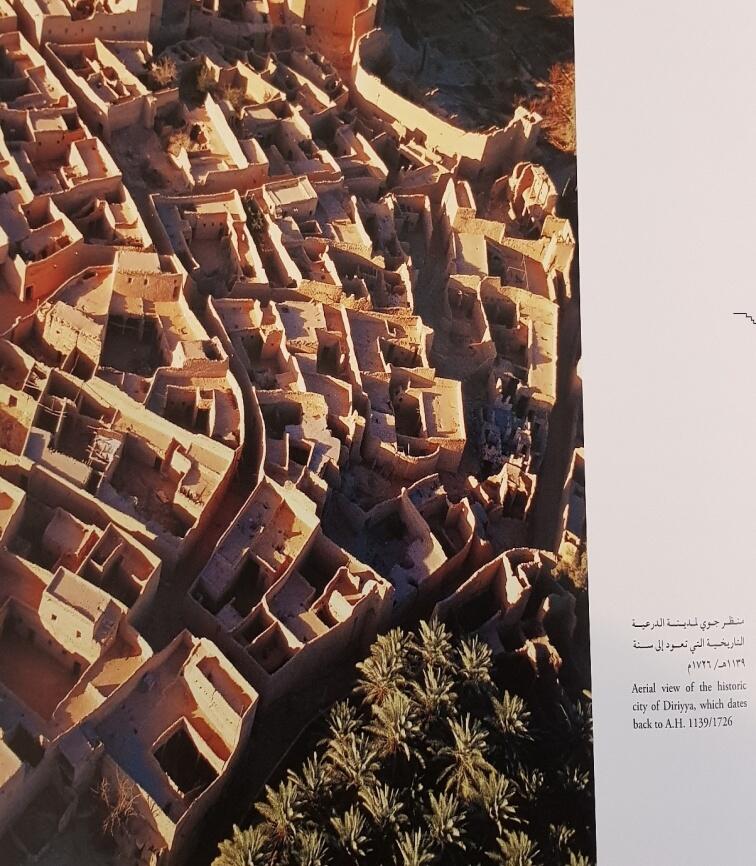
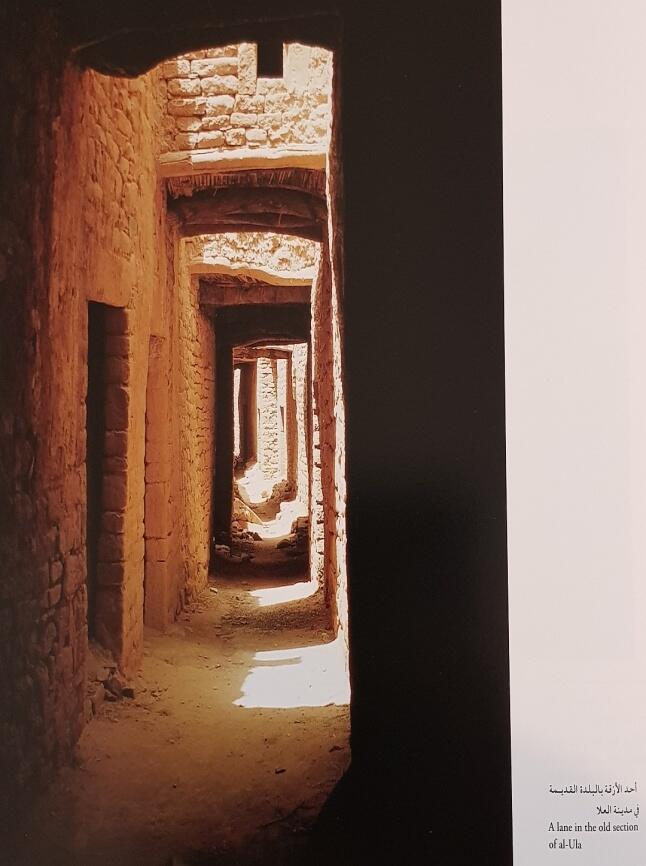


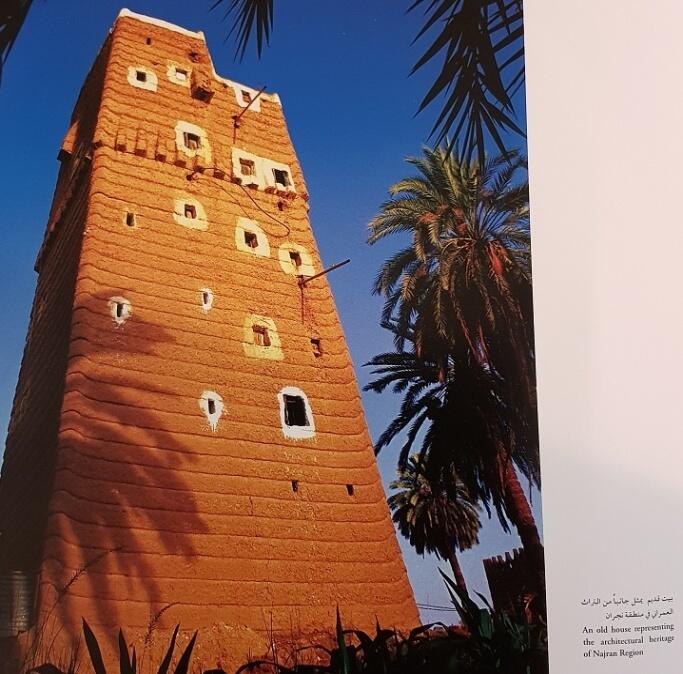

Warm Up:
- Do you know of the historic city of ancient cities? The ancient towns are spread across Saudi Arabia and date back to A.H 1139/1726.
- What is your favorite shape/color/line in the picture? Why do you like the shape/color/shape?
- Can you relate the shape/color/line with what you see in the daily life? What do you think of these objects you see?
Observing:
- While observing, note what you think about the objects.
- Relate your observation to what you know is similar to the objects.
- Identify different colors/shapes/lines in the objects.
- The following color/shape/line words are visible in the picture (Try and arrange them to each object and make sense in the form of a sentence).
- Brown/the/rectangular/houses/circular/arranged/are/manner
- Green/the/circular/trees/house/besides/each/are
- Identify the noun, pronoun, adverb, and verb in the correct sentence.
Post Observation
What is the meaning of the picture?
The pictures are about ancient cities in Saudi Arabia and narrow streets. The cities have an ancient design of houses that are rectangular. The houses have a similar color, which is brown. The houses are arranged in a circular manner.
Do you know what inspired the architecture of the ancient cities and houses?
The need for community living inspired the arrangement of the houses. The creators of the houses were very creative.
Sample Writing Activity/Learning Task (With Lesson Plan) 2
- Title: Ancient technology in drawing water
- Teacher:
- Institution:
- Course:
- Level: Elementary/Intermediate
- Class Duration: 60 minutes
- Language of Instruction: Sign Language
Skill Focus: Thinking skills: Observing and interpretation
Artwork Integrated: Picture of Haddaj well in Tayma in Tabuk Region
Bring to class: Copies of the picture, projector, and computer/tablet, writing sheets
Content Objective:
- To improve a learner’s awareness of farming, source of water, and technology involved.
- To think proactively and holistically about environmental issues.
Linguistic Objectives:
- To illustrate knowledge and application of collocations.
- To learn and apply different common phrases and idioms.
- To attentively observe.
Description of the lesson activities:
Warm Up Activity
While Viewing
Activities of the Lesson Plan 2
Inside Ancient Farming, Technology, and Water Source in Saudi Arabia
Warm Up Activities
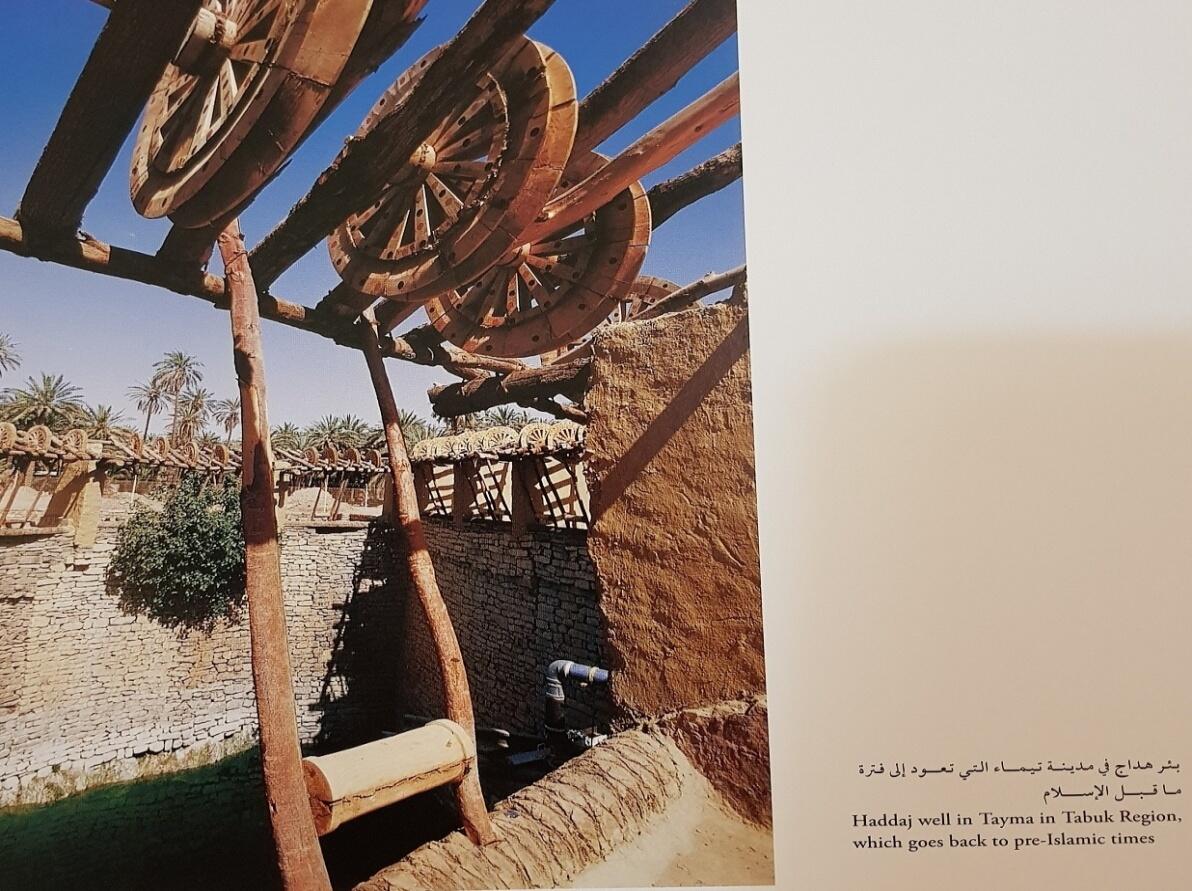
- Observe this picture.
- What do you see in the caricature?
- Can you guess the topic of the day from the picture?
- What does the picture remind you of?
- What is your view on the ancient technology in drawing water?
While Observing:
Collocations: Two groups of collocations beginning from in-group A and ending with in-group B. Then observe the picture again to check the learners’ answers.
Chronology: While observing the picture into details, order the collocations in a chronological manner.
- The pulley technology is very ancient in the science of drawing water
- The practice was common in the ancient Saudi Arabian society
- The technology is tedious thought efficient during time of application
True or False:
Each learner to read each statement after the second time of observing the picture and classify it as true or false:
- The pulley system is effective in drawing water
- The system is not tedious
- The system was common in ancient Saudi Arabia.
Details:
Observe the objects in the picture. Then write down the details of what you think about each object:
- Pulley:
- Rollers:
- Support bars:
- Wall:
- Hole:
Verbs:
You will read these objects/nouns and write what verbs you can identify.
- The ………….. is ancient water drawing system.
- ……………. is very tedious.
- ……………is effective in drawing water.
Sample Writing Activity/Learning Task (With Lesson Plan) 3
- Title: Ancient attractions in Saudi Arabia
- Teacher:
- Institution:
- Course:
- Level: Elementary/Intermediate
- Class Duration: 60 minutes
- Language of Instruction: Sign Language
Skill Focus: Thinking skills: Observing and interpretation
Artwork Integrated: Pictures of Rajajil pillars near Jouf, unfinished Nabatean tomb,
Bring to class: Copies of the picture, projector, and computer/tablet, writing sheets
Content Objective:
- To recognize the format of the graphics in the picture.
- To learn about ancient history of Saudi Arabia and attraction sites.
- To identify unique features visible in the picture.
Linguistic Objectives:
- To internalize basic vocabulary.
- To create and construct a self-made drawing replicating the picture.
Description of the lesson activities:
Warm Up Activity
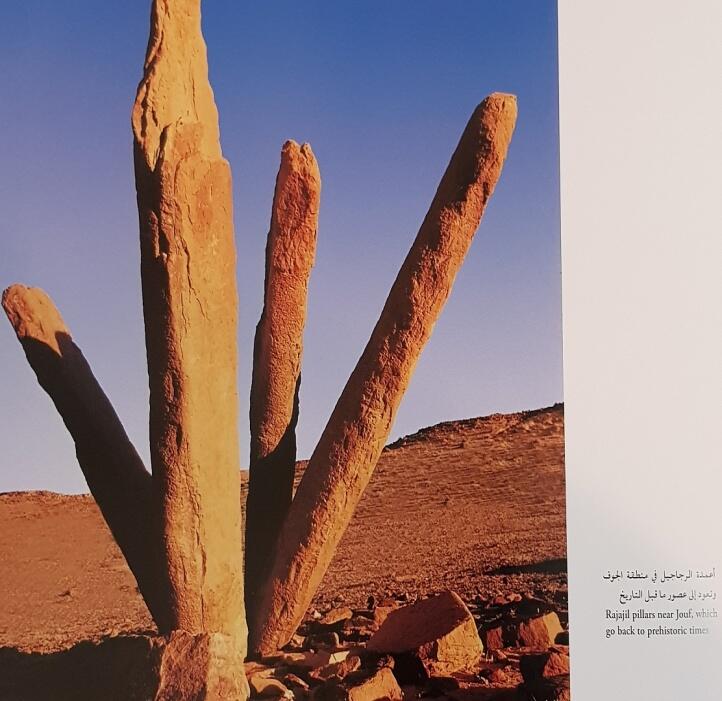
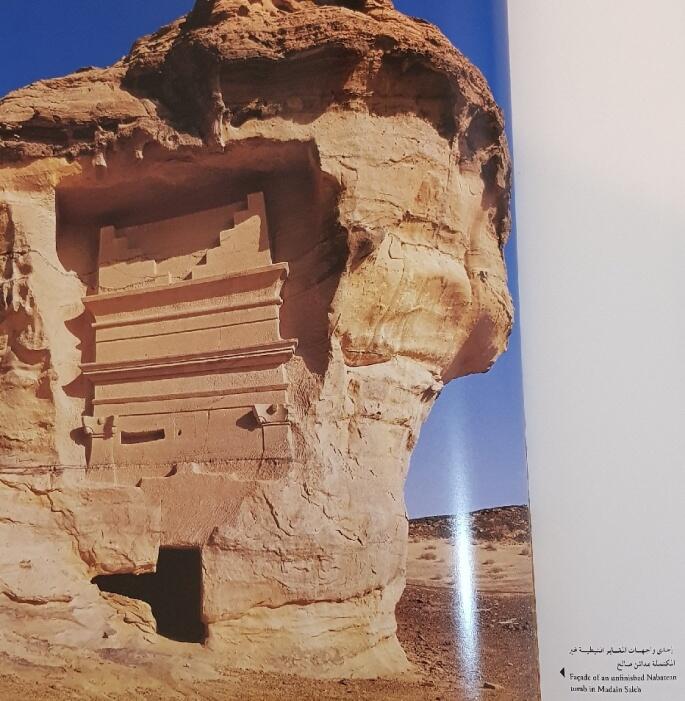
Before Listing What Is Observed
While Observing
Post-Viewing
Activities of the Lesson Plan 3
Warm-Up Activity:
- Have you seen a similar picture before?
- What do you like most/least from the picture?
Before You View:
Your instructor will give a flashcard with a list of vocabulary. With three partners, correctly read the vocabulary flashcard.
View for Details:
Relate the vocabulary to each object in the picture and put them into perspective. Test the learner’s ability to self-identify these objects.
Post Viewing:
How can you relate the picture to the everyday life?
Vocabulary Game:
Find these words from the letter grid below.
- Stone
- Pillar
- Sand
- Sky
- Brown
- Blue
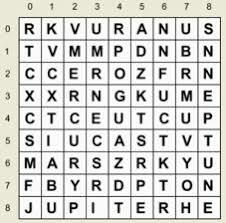
Conclusion and Recommendations
Teaching EFL to special needs learners in Saudi Arabia has often adopted the teacher-centered approach, which make students passive since this method is associated with the Grammar-Translation. As a result, the level of learner participation or adoption of self-thinking and language skills is relatively low. This handbook project recommends a dynamic, learner-centered, and communicative approach to language teaching through the integration of visible artworks. Based on the Artful Thinking program routines, the project suggests integration of visual art to aid proactive and holistic internalization of different language skills among deaf learners. The rationale for development if this handbook project is to give EFL teachers with standardized model lesson plans that augment a learner’s memory, augmentative thinking, and proactive participation in the class activities as part of English language acquisition strategy.
References
Alharbi, H. (2015). Improving students’ English speaking proficiency in Saudi public schools. International Journal of Instruction, 8(1), 105-116.
Al-Shammakhi, F., & Al-Humaidi, S. (2015). Challenges facing EFL teachers in mixed ability classes and strategies used to overcome them. World Journal of English Language, 5(3), 33-35.
Al-Subaiei, M. (2017). Challenges in mixed ability classes and strategies utilized by ELI teachers to cope with them. English Language Teaching, 10(6), 45-56.
Amin, B., Benachaiba, C., & Guemide, B. (2013). Using multimedia to motivate students in EFL classrooms: A case study of English master’s students as Jijel University, Algeria. Malaysian Journal of Distance Education, 14(2), 63-81.
Arabian Rock Art heritage. (2017). The Arabian rock art heritage project. Web.
Assalahi, H. (2013). Why is the grammar-translation method still alive in the Arab world? Teachers’ beliefs and its implications for EFL teacher education. TPLS, 3(4), 589-599.
Birks, M., & Mills, J. (2012). Grounded theory: A practical guide. Los Angeles, CA: SAGE Publications.
Ching, H., & Fook, F. (2013). Effects of multimedia-based graphic novel presentation on critical thinking among students of different learning approaches. Turkish Online Journal of Educational Technology, 12(4), 56-66.
Creswell, J. (2013). Qualitative inquiry and research design: Choosing among five approaches. Thousand Oaks, CA: SAGE Publication.
Cullen, R., Harris, M., & Hill, R. (2012).The learner-centered curriculum: Design and implementation. San Francisco, CA: John Wiley & Sons.
Doman, E. (2014). Insight into EFL teaching and issues in Asia. London, England: Cambridge Scholars Publishing.
Faruk, S. G. (2014) Saudis’ attitude towards English: Trend and rationale. Professional Communication & Translation Studies, 7(1/2), 173-180.
Gass, S., & Mackey, A. (2012).The Routledge handbook of second language acquisition. New York, NY: Routledge.
Goldratt, E. M., & Cox, J. (2016). The goal: A process of ongoing improvements (3rd ed.). New York, NY: Taylor & Francis.
Hajhashemi, K., Aref, K., & Anderson, N. (2012). The relationship between multiple intelligences and reading proficiency of Iranian EFL students. World Applied Sciences Journal, 19(10), 1475-1483.
Havard Graduate School of Education (2017). Project zero: Artful thinking. Web.
Hii. S. C., & Fong. S. F. (2013). Effects of multimedia-based graphic novel presentation on critical thinking among students of different learning approaches. Turkish Online Journal of Educational Technology, 12(4), 56-66.
Khaghaninejad, M., & Hosseini, S. (2014). The relationship between types of multiple intelligence and lexical awareness: Evidence from adult Iranian EFL learners. Modern Journal of Language Teaching Methods, 4(4), 170-182.
Larsen-Freeman, D., & Anderson, M. (2013). Techniques and principles in language teaching (3rd ed.). Oxford, England: Oxford University Press.
Mulnix, J. W. (2012). Thinking critically about critical thinking. Educational Philosophy and Theory, 44(5), 464-479.
Obusu, K. G., Adu-Agyem, J., & Opoku-Asare, A. N. (2013). The use of visual art forms in teaching and learning in schools for the deaf in Ghana: Investigating the practice. International Journal of Innovative Research & Development, 2(5), 408- 421.
Orlich, D., Harder, R., Callahan, R., Trevisan, M., & Brown, A. (2012). Teaching strategies: A guide to effective instruction (10th ed.). Belmont, CA: Cengage Learning.
Pedersen, F., & Kronborg, L. (2014). Challenging secondary teachers to examine beliefs and pedagogy when teaching highly able students in mixed-ability health education classes. Australasian Journal of Gifted Education, 23(4), 12-17.
Penda, P., Bijelic, T., & Babic, Z. (2017). Rethinking tradition in English language and literary studies. London, England: Cambridge Scholars Publishing.
Reid, W., & Walker, D. (2012). Case studies in curriculum change: Great Britain and the United States. New York, NY: Routledge.
Saville-Troike, M. (2012). Introducing second language acquisition (2nd ed.). Cambridge, England: Cambridge University Press.
Tishman, S., & Palmer, P. (2007). Work of art are good things to think about. Boston, MA: Harvard Graduate School of Education.
Verderber, R., Verderber, K., & Sellnow, D. (2012).The challenge of effective speaking. Belmont, CA: Wadsworth.
Yin, R. (2012). Applications of case study research (3rd ed.). Washington, DC: SAGE Publication.
Yun, E. (2014). Teaching Arabic to Korean students using films. The New Educational Review, 37(3), 80-91.